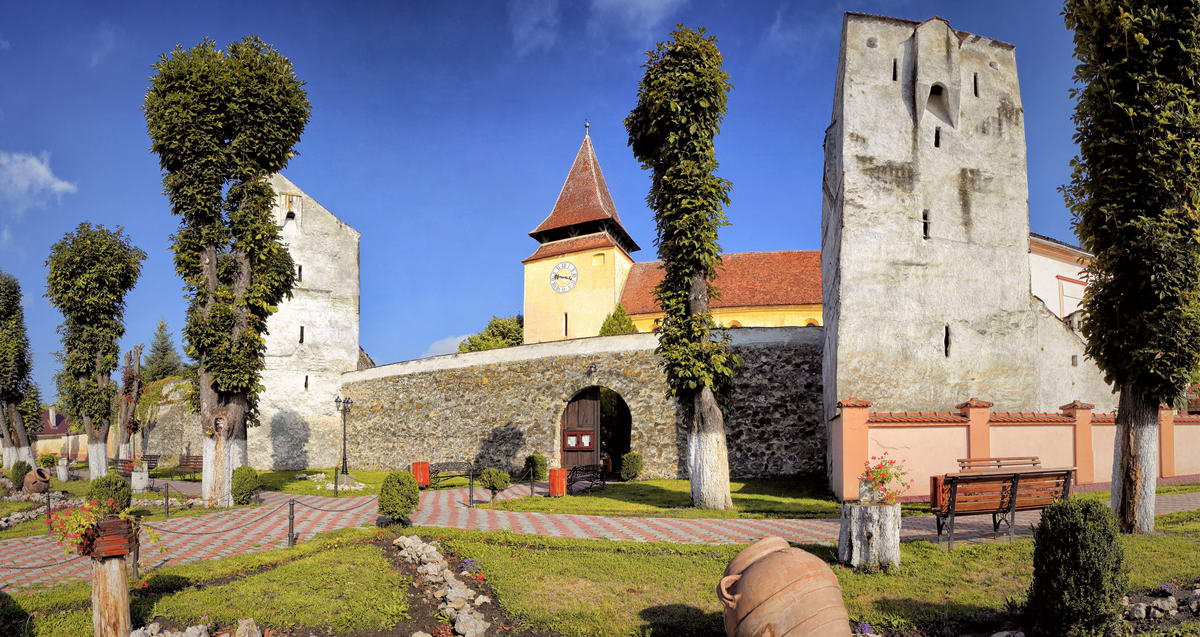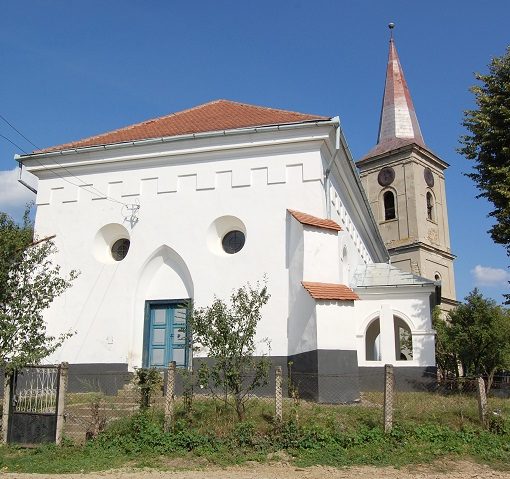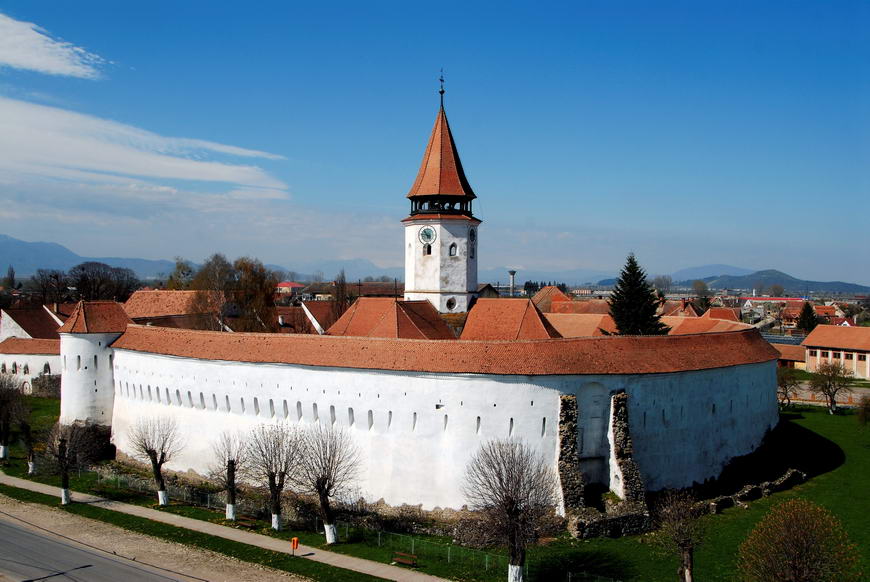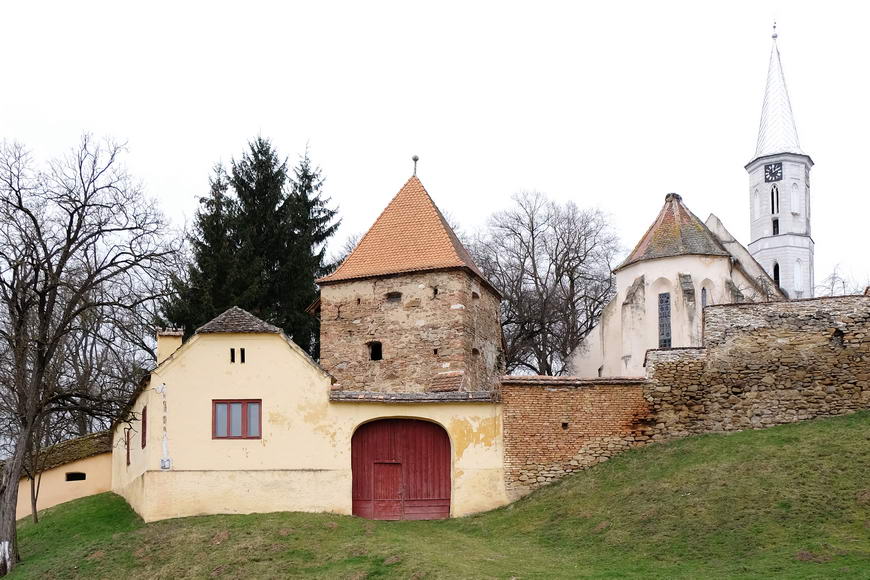
On the settlement founded in the 13th century by the Teutonic Order, the 15th century Gothic basilica evolved by altering the preceding Romanesque church. Later on it was fortified and surrounded by a curtain wall with five defence towers, an outer bailey, a moat, and the tower of the church was provided with arrow loops. After battle damages, the church was re-built in its original shape in 1658, but the vaults of the nave were added later in 1775. Remaining details of the Gothic period, besides the plan composition of the ground floor, are the Gothic cross rib vault of the chancel and the domical vault of the apse as well as the trefoil tracery windows. In the reconstruction phase the distinctive roof of the tower in form of a truncated pyramid with an open level for the bells was built.
The interior setting was created during the 18th and 19th century. Unique in Transylvania is the 1902 colourful floral and ornamental painting covering all walls and vaults.
Place and surroundings
ontGhimbav is located several miles away from Braşov, in the middle of the so-called “Ţara Bârsei”. Due to its position close to the natural border of the Carpathian arc, the region was threatened by armed hostilities in the 15th and 17th Century. Therefore the church, as many other similar buildings in the region was rebuilt and prepared for defence. Besides fortifying their own church, the inhabitants had to support the construction of the defensive systems of Braşov.
Between 1599 and 1611 the village was burned down twice and it was also plundered twice. In 1612 the fortified church had to be surrendered without a fight. And in 1658 besieged Crimean Tatars the fortification again. After negotiation free passage was offered to the more than 900 villagers that where inside. Thus the promise was not kept and the inhabitants leaving the protective walls were killed or deported to the gates of Braşov. From the ones offered to redeem, 155 were ransomed by the inhabitants of Braşov.
Contact:
Ev.Parish Vulcan
+40/268/256 477
Accommodation:
Former parish house, contact: Mrs. Monika Rausch, tel.: +40/268/258773.




